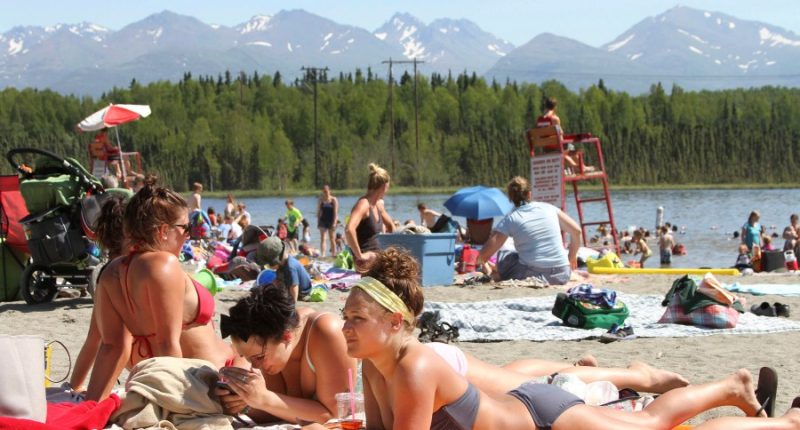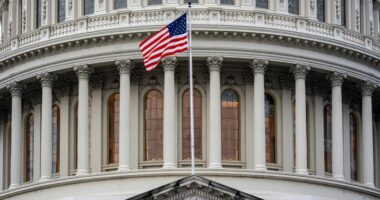Share this @internewscast.com

ANCHORAGE, Alaska (AP) — Alaska is experiencing a historic moment with parts of the state being placed under a heat advisory for the first time ever. However, this comes with a caveat.
Alaska has encountered warmer-than-usual temperatures before, even though it’s generally deemed the coldest state in the U.S. The introduction of heat advisories by the National Weather Service in Alaska is a recent change. Previously, similar weather conditions were announced through “special weather statements.”
The implementation of a heat advisory designation aims to improve public comprehension of the severity and potential risk of such weather conditions, which the vague “special weather statement” failed to achieve.
The first advisory is for Sunday in Fairbanks, where temperatures are expected to top 85 degrees Fahrenheit (29 degrees Celsius). Fairbanks has has been warmer in the past, but this is unusual for June, officials said.
Here’s what to know about Alaska’s inaugural heat advisory:
Why it’s the first
The National Weather Service’s switch from special weather statements to advisories was meant to change how the public views the information.
“This is an important statement, and the public needs to know that there will be increasing temperatures, and they could be dangerous because Alaska is not used to high temperatures like these,” said Alekya Srinivasan, a Fairbanks-based meteorologist.
“We want to make sure that we have the correct wording and the correct communication when we’re telling people that it will be really hot this weekend,” she said.
Not unprecedented and not climate change
The change doesn’t reflect unprecedented temperatures, with Fairbanks having reached 90 degrees twice in 2024, Srinivasan said. It’s purely an administrative change by the weather service.
“It’s not that the heat in the interior that prompted Fairbanks to issue this is record heat or anything like that. It’s just now there’s a product to issue,” said Rich Thoman, a climate specialist at the Alaska Center for Climate Assessment and Policy.
Thoman also clarified that the term swap doesn’t have anything to do with climate change.
“I think some of it is related to the recognition that hot weather does have an impact on Alaska, and in the interior especially,” Thoman said.
Little air conditioning
While the temperatures in the forecast wouldn’t be considered extreme in other U.S. states, Thoman noted that most Alaska buildings don’t have air conditioning.
“And just the opposite, most buildings in Alaska are designed to retain heat for most of the year,” he said.
People can open their windows to allow cooler air in during early morning hours — if wildfires aren’t burning in blaze-prone state. But if it’s smoky and the windows have to remain shut, buildings can heat up very rapidly.
“Last year was the third year in a row in Fairbanks with more than a hundred hours of visibility-reducing smoke, the first time we’ve ever had three consecutive years over a hundred hours,” he said.
There’s only been two summers in Fairbanks in the 21st century with no hours of smoke that reduced visibility, a situation he said was commonplace from the 1950s to the 1970s.
What about Anchorage?
The Juneau and Fairbanks weather service offices have been allowed to issue heat advisories beginning this summer, but not the office in the state’s largest city of Anchorage — at least not yet. And, regardless, temperatures in the area haven’t reached the threshold this year at which a heat advisory would be issued.
Brian Brettschneider, a climate scientist with the weather service, said by email that the Anchorage office is working on a plan to issue such advisories in the future.
















